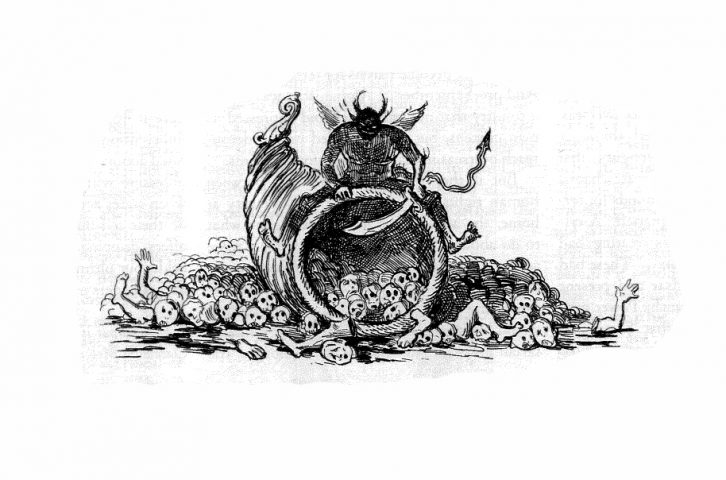Books Reviewed
Liberals and conservatives agree that the Supreme Court’s adjudication of the First Amendment’s religion clauses is a disaster. No fixed doctrines guide the courts. Precedents stand side-by-side defending almost every conceivable outcome for any case. No one, especially not the justices themselves, can offer clearly defined principles to explain what is and is not constitutional.
In Getting Over Equality, Steven D. Smith, a professor at Notre Dame Law School, argues that the problem with this jurisprudence is not lack of principle, but too much of it. Smith contends that all leading liberal and conservative advocates appeal to the principle of “religious equality.” But “equality,” he claims, is a meaningless concept. Such appeals beg the question “equal in what?” Equals ought to be treated equally, but what, Smith asks, is the relevant characteristic or attribute that matters? Does equality demand only that all religions stand formally equal to one another before the law, or that every citizen, whether religious or non-religious, be equally affected by the law? Such questions are impossible to answer, he further claims, because no satisfactory theory of religious freedom exists or can be developed. All purported theories of religious freedom “privilege” some spiritual or temporal perspective. No theory is truly neutral because every theory assumes the superiority of either the sacred or the secular, and from its starting point generates foreordained results.
Because Smith finds “equality” and all other theories of religious freedom empty, he champions “unprincipled religious freedom.” Politicians, he argues, ought to adjudicate disputes over religion in the public square on a case-by-case basis without fixed doctrines to guide decision-making. Such an approach can accommodate compromises between religious and non-religious citizens as well as recognize and accept that church-state disputes, like all political disputes, produce winners and losers. “Unprincipled religious freedom” also can lower the stakes of religious disputes by keeping them at a local level. Instead of demanding that the Supreme Court decide, for example, whether public schools may allow a graduation prayer, Smith would let local school officials decide for themselves. If middle schools in Arkansas want graduation prayers, they could have them; if not, they could omit them. No need to nationalize problems, he reasonably explains. A non-principled approach also recognizes that “there is no realistic expectation that the diverse array of problems and conflicts that we lump together and address under the heading of ‘religious freedom’ can be wisely or sensibly resolved by a few people with training at elite law schools.”
Given the disarray of religious liberty jurisprudence, Smith’s disparagement of legal elites is well founded. His book disappoints, however, because it fails to draw the obvious conclusion of its own argument—namely, that the judiciary should stop intervening in church-state disputes. Judicial review’s legitimacy depends on the Court’s ability to translate constitutional rights into clearly defined principles. Without such principles, judicial review inevitably becomes the arbitrary exercise of judicial will. If no principle of religious liberty exists, then the judiciary ought not strike down democratically passed laws. But like a druggie who knows he has a problem but succumbs to his weakness anyway, Smith can’t kick the law professor’s addiction to judicial power. He grants the exception that judges should intervene in disputes “where there is a significant impairment of religious freedom.” Of course, this is what every judge believes he is doing. First Amendment law is a mess because judges have acted exactly as Smith suggests, deciding cases without principles.
Because Smith denies that principles can or should guide judicial action, he offers little to traditional judges or constitutional scholars. He suggests that the courts should extend exemptions from burdensome laws to religious citizens under the Free Exercise Clause, and that they should not strike down public policies that advance religion as Establishment Clause violations. Both positions can be defended, but Smith doesn’t really try. Clearly, he favors religion and believes that government should accommodate it as much as possible. As to why, he says that such is “my perspective—a perspective that is, again inevitably, severely limited…. So people with other perspectives and experiences will doubtless find my specific suggestions unattractive, probably even obtuse.” They will indeed, and, unfortunately Smith is unable to engage them.
* * *
Smith appeals to “perspective” because he writes—consciously, I believe—as a postmodernist. His mode of arguing suggests that he does not believe in the philosophic enterprise as grounds for sound judgment. He rejects a theoretical underpinning for religious freedom because he presumes that a theory is adequate only if everyone accepts it. Disagreement alone, he contends, demonstrates a theory’s inadequacy. The traditional philosophic view, however, denies that the objective adequacy of a theory depends on its subjective acceptance by all members of society. The success of the philosophic enterprise has never been understood to require that all who participate in it agree at the end of every debate.
Not only is Smith’s mode of argument troubling, so too are his political recommendations. His rejection of principles implicitly denies the idea that men have a natural right to religious freedom. He defends a position that he correctly labels “religious tolerance,” which in judicial terms means that judges have “a nonabsolute duty” to accommodate religion whenever possible. A “nonabsolute duty,” however, is no duty at all. Though he seeks to protect religious liberty, Smith renders it extremely vulnerable. Judges, legislators, and citizens—especially those who deplore religion—respect the religious freedom of others because they believe it to be a fundamental right. Our contemporary understanding of that right may be inadequate, but this does not mean we should abandon it in favor of a vague “perspective” that religion should be accommodated if possible. Instead of guiding us through our contemporary confusions, Smith would deny us our constitutional rights. He thus delivers not the promised “critical diagnosis of religious freedom in America,” but rather a potentially critical blow to our most precious freedom.



